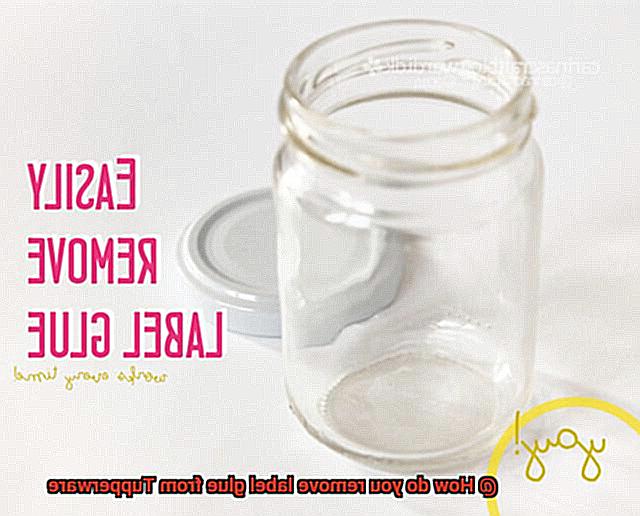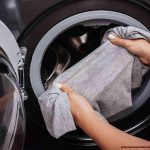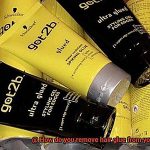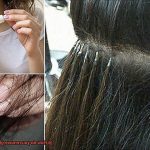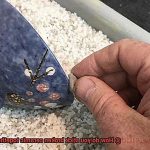Sick and tired of battling the sticky residue left behind by those pesky labels on your Tupperware? We feel your pain. There’s nothing more frustrating than peeling off a sticker, only to be left with an adhesive mess that just won’t let go. But fret not, my friend. In this blog post, we’ve got your back and we’re going to spill the beans on the best ways to banish label glue from your beloved Tupperware, leaving it squeaky clean and free from any gunk.
Method 1: Hot Soapy Water
Contents
Let’s start with the simplest approach – hot soapy water. First things first, peel off as much of the label as you can. Then, grab yourself a sink or basin and fill it up with piping hot water mixed with some trusty dish soap. Pop your Tupperware in there and let it soak for a good 15-20 minutes. Once that time is up, grab a scouring pad or sponge and gently scrub away the lingering glue residue. Give it a thorough rinse with cold water and dry it off using a clean towel.
Method 2: Oil or Mayonnaise
If hot soapy water didn’t quite do the trick, don’t sweat it. Time to bring out the big guns – oil or mayonnaise. Yup, you heard us right. Grab yourself some vegetable or olive oil and apply a small amount directly onto that stubborn glue mess. Let it sit for a few minutes to allow the oil to work its magic on breaking down that adhesive nonsense. Now take a soft cloth or sponge and start rubbing in circular motions over the area. Voila. The glue should start dissolving before your very eyes, making it easy-peasy to wipe away. Rinse your Tupperware under warm water and make sure you dry it completely.
Method 3: Vinegar or Rubbing Alcohol
For all you natural solution lovers out there, we’ve got something special for you – vinegar or rubbing alcohol. Grab yourself a cloth or paper towel and dampen it with either vinegar or rubbing alcohol. Apply it to the glue residue and let it sit there for about 10 minutes, allowing the liquid to break down that sticky mess. Once time’s up, grab a soft sponge or cloth and gently scrub away until the glue lifts right off. Rinse your Tupperware thoroughly and dry it completely.
Remember, no matter which method you choose – hot soapy water, oil
What is Label Glue?
Label glue, a seemingly insignificant detail, possesses an undeniably vital role in securely affixing labels to an array of surfaces, including the versatile Tupperware containers. This comprehensive guide will immerse you in the captivating world of label glue, unraveling its intricate composition, extraordinary adhesive properties, diverse application methods, and ingenious removal techniques. Whether you are a label aficionado or merely intrigued by the science behind sticky substances, this article will equip you with a treasure trove of knowledge.
Understanding Label Glue:
Composition:
- A captivating concoction of polymers, resins, solvents, and additives forms the very essence of label glue.
- The precise composition relies on factors such as intended usage and the nature of the surface material.
Adhesive Properties:
- Label glue is a superpower unleashed, creating an unyielding bond that defies the harshest conditions—moisture, heat, and friction.
- Its magical grip clings to a wide range of surfaces—plastic, glass, metal, and paper alike.
Application and Drying Process:
Application Methods:
- The artistry of applying label glue unveils itself through brushes that dance across surfaces or precise applicator tips and nozzles.
- Liquid, gel, or solid—different forms of label glue enchant us with their versatility.
Drying Time:
- Time stands still as we witness the alchemical transformation from liquid to eternal adhesion.
- The drying time is dictated by factors such as the thickness of the glue and the whims of temperature and humidity.
Removing Label Glue from Tupperware:
Hot Water and Dish Soap:
- Immerse your Tupperware in a luxurious bath of hot soapy water for a rejuvenating 10-15 minutes.
- Gently caress the label glue with a sponge or scrub brush, coaxing it away from its steadfast grip.
Cooking Oil or Vegetable Oil:
- Anoint the glue with a sacred droplet of oil, allowing its divine touch to penetrate.
- With circular motions, massage the glue until it begins to surrender its tenacious hold.
Rubbing Alcohol or Nail Polish Remover:
- Dampen a cloth or cotton ball with these potent elixirs, their power to dissolve awe-inspiring.
- Like an ancient ritual, tenderly stroke the glue until it vanishes into thin air.
Vinegar:
- Envelop the glue in a cloth or paper towel soaked in the pungent essence of vinegar.
- A gentle yet firm rub unravels the bond, unmasking the surface beneath.
Hot Water and Dish Soap Method
The Hot Water and Dish Soap Method is a classic and effective way to tackle label glue on Tupperware. This tried-and-true method will have your Tupperware looking brand new in no time. Say goodbye to stubborn adhesive and hello to pristine containers.
Here’s how the Hot Water and Dish Soap Method works:
Fill up a sink or basin with hot water, ensuring it’s not too hot to handle. We don’t want any burnt fingers here.
Add a generous amount of dish soap to the hot water, creating a lovely soapy solution. Mix it up well, creating a magical elixir that will banish that glue.
Gently place your Tupperware items in the soapy water bath. Let them soak for at least 15-20 minutes. This magic soak softens the glue, making it easier to remove.
After the soaking period, it’s time to get scrubbing. Grab a sponge or cloth and gently scrub the label glue. The combination of hot water and dish soap loosens the adhesive, allowing it to come off more easily.
If the glue is being stubborn, bring out the big guns – an old toothbrush or a soft-bristled brush. Give the affected area some extra TLC with vigorous scrubbing.
Rinse your Tupperware items thoroughly with clean water to remove any soap residue.
Patience is key. Dry your Tupperware completely before using or storing it. We don’t want any lingering moisture.
Now, let’s dive into some additional tips to enhance your label glue removal experience:
- If you don’t have a large enough sink or basin for your Tupperware, don’t worry. A large bowl or plastic container will work just fine. Just make sure it can hold the hot soapy water for soaking.
- For those who want speedy results, heat the water on the stove or in the microwave before adding dish soap. This creates a warm soapy solution, making the process faster.
- Not all dish soaps are created equal. Look for ones with grease-cutting properties as they tend to be more effective in removing label glue.
- If stubborn residue spots remain after scrubbing, mix baking soda with water to create a paste. Apply this paste to the affected area and gently scrub in circular motions until the residue is gone. Rinse thoroughly afterward.
Remember to always test any cleaning method on a small, inconspicuous area of your Tupperware before applying it to the entire surface. We want to avoid any damage or discoloration mishaps.
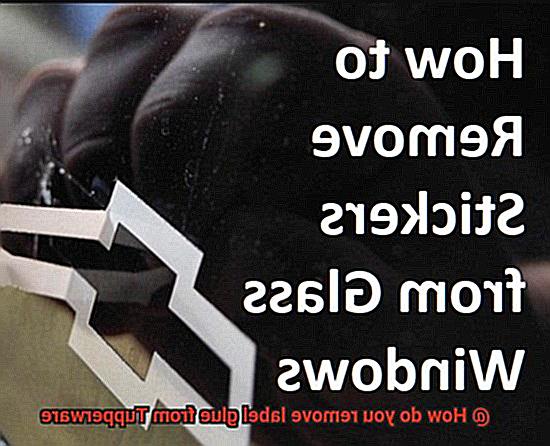
Oil Method
The oil method is a highly effective technique for removing label glue from Tupperware and other plastic surfaces. This method involves using different types of oils to loosen and dissolve the adhesive, making it easier to eliminate the sticky residue. Whether you have vegetable oil, olive oil, coconut oil, or even essential oils like lemon or tea tree oil in your kitchen, you have the perfect tool for this task.
To begin, apply a small amount of oil directly onto the label or glue residue. Allow the oil to sit for a few minutes, allowing it to penetrate and soften the adhesive. Then, grab a cloth or sponge and gently scrub the area in circular motions. This motion will help lift off the glue and make it easier to remove. For any stubborn residue, don’t worry. You can use a plastic scraper or an old credit card to scrape it away.
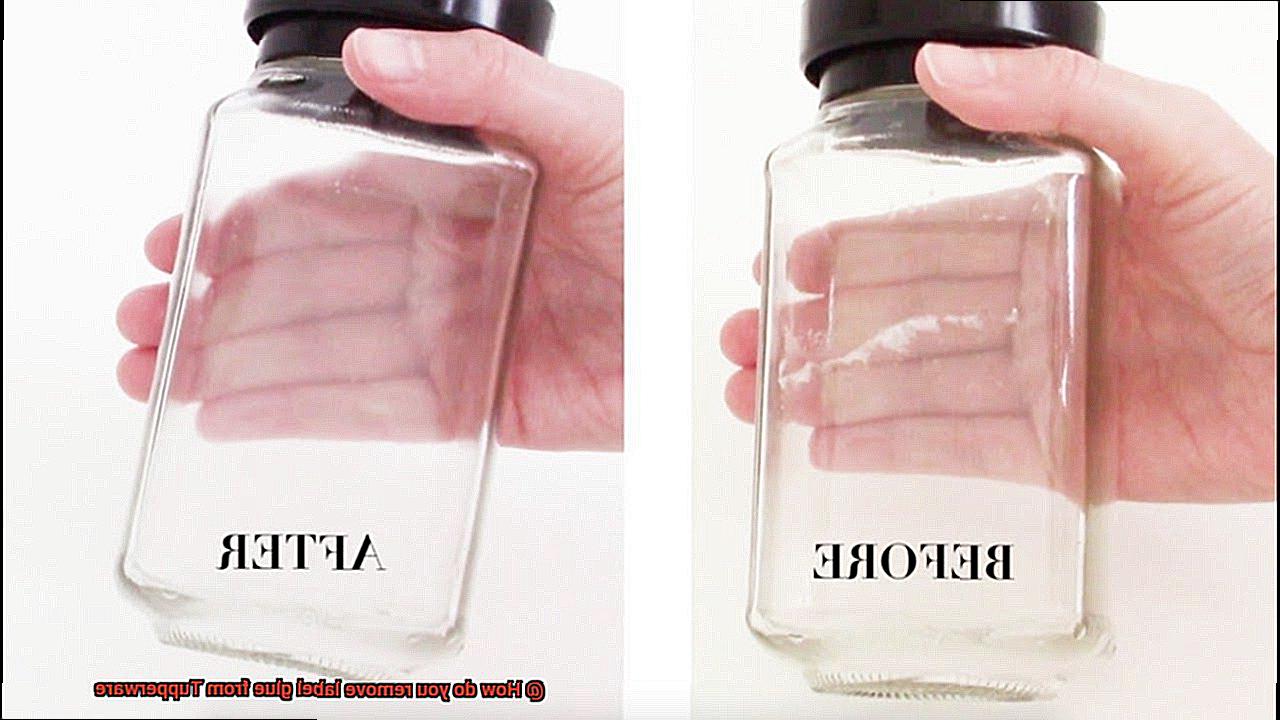
It’s important to note that different types of oils work better on different types of glue. For water-based adhesives, vegetable oil should do the trick. However, for tougher glues, stronger oils like citrus-based ones may be more effective.
Once you’ve successfully removed the glue, give your Tupperware a thorough wash with warm soapy water to eliminate any remaining oil residue. Rinse well and ensure that your container is completely dry before using or storing it.
The beauty of the oil method lies in its gentle yet powerful nature. Unlike harsh chemical solvents, oils are safe for Tupperware and other plastic surfaces. They dissolve the adhesive without causing any damage. Plus, they’re easily accessible and affordable alternatives to commercial adhesive removers.
Rubbing Alcohol/Nail Polish Remover Method
Sticky labels on Tupperware can be an absolute nightmare. You try to peel them off, but they leave behind a stubborn residue that seems determined to stick around. But fret not, my friend. I have a solution that will make those sticky labels disappear like magic: the rubbing alcohol/nail polish remover method.
Now, let’s delve into the science behind this miraculous method. Rubbing alcohol and nail polish remover both possess powerful solvents that annihilate the adhesive properties of glue. It’s as if they were bestowed with superpowers to conquer sticky messes.
Here’s how you can wield these extraordinary substances and bid farewell to label glue on your Tupperware. Arm yourself with a soft cloth or cotton ball and pour a small amount of rubbing alcohol or nail polish remover onto it. Gently dab the cloth onto every inch of that tenacious residue, ensuring complete coverage.
Now comes the challenging part – patience. Allow the rubbing alcohol or nail polish remover to work its enchantment. Let it sit on the glue for a few minutes, granting it ample time to infiltrate and dissolve that obdurate adhesive. While you wait, why not catch up on your favorite TV show or unleash your inner dancer? Do whatever tickles your fancy.
Once the waiting game is over, it’s time for some elbow grease (not the dance kind). Employ gentle circular motions as you rub the cloth or cotton ball over the glue. Behold. The glue will gradually loosen its grip and vanish into thin air, much like a magician’s trick. But remember, handle your Tupperware with care during this process.
If there are any defiant areas clinging onto the glue, fear not. You can apply a tad more rubbing alcohol or nail polish remover to those trouble spots. However, exercise caution and avoid going overboard with the solvent, as it may harm your Tupperware. To err on the side of caution, test a small, inconspicuous area first.
Once you’ve triumphed over the glue, it’s time for the final act – rinse your Tupperware meticulously with warm soapy water. This will eliminate any residue from the rubbing alcohol or nail polish remover, leaving your Tupperware squeaky clean. And remember, my friend, always dry your Tupperware thoroughly before using it. We wouldn’t want unsightly water spots ruining your victory.
Now, a word of caution: while rubbing alcohol and nail polish remover are generally safe for most Tupperware surfaces, certain types of plastic may suffer damage or discoloration. Hence, it’s imperative to consult the manufacturer’s instructions or perform a spot test before diving headfirst into these solvents.
Vinegar Method
Well, fret no more. I have the perfect solution for you – the vinegar method. Vinegar, a household staple, is a magical elixir that can work wonders when it comes to tackling sticky situations. And removing label glue is no exception.
So, how does the vinegar method work its enchanting powers? Let me guide you through the step-by-step process:
- Gather your supplies: To embark on this sticky adventure, you will need equal parts vinegar and water, a soft cloth or sponge, and either a trusty plastic scraper or your nimble fingernail.
- Create the vinegar solution: In a bowl or sink, mix equal parts vinegar and water. This alchemical combination will create a gentle yet potent solution for dissolving the label glue.
- Immerse in vinegar: Submerge your Tupperware item in the mystical vinegar solution, ensuring that every inch of the label glue is fully covered. Let it bask in this transformative bath for at least 30 minutes, allowing the vinegar’s acidic properties to work their magic.
- Vanquish the glue: After the soaking period has elapsed, take up your soft cloth or sponge and with gentle strokes, scrub away the remnants of the label glue. Feel the adhesive properties surrendering under the almighty power of vinegar.
- Employ scraper or fingernail: Should you encounter any stubborn residue that refuses to yield to mere scrubbing, fear not. Equip yourself with a trusty plastic scraper or enlist the aid of your agile fingernail to cautiously scrape away those last traces. Be vigilant not to harm the delicate surface of your beloved Tupperware.
- Rinse away: Once all the label glue has been banished, cleanse your Tupperware of any lingering vinegar residue by thoroughly rinsing it with warm water. Watch as the last remnants of the vinegar’s spell are washed away.
- Return to purity: Finally, cleanse your Tupperware with soap and water, restoring it to its pristine state. Now, it is ready to resume its noble duty of storing your delectable creations.
Heat Method
The heat method is a fascinating and effective technique for removing label glue from Tupperware. By applying heat to the glue, it softens and becomes more pliable, making it easier to remove. This method offers various approaches, each with its own unique benefits.
One popular heat method involves the use of a hairdryer. By directing hot air onto the label for a few minutes, the glue begins to soften and become more forgiving. This magical transformation allows you to effortlessly scrape away the softened glue using a cloth or plastic scraper. It’s like watching a spell unfold before your eyes.
If a hairdryer is not readily available, fear not. The heat method can also be accomplished using hot water. Fill a sink or bowl with hot water and immerse the Tupperware item, ensuring the label is fully submerged. Allow it to soak for a few minutes, allowing the heat to penetrate the stubborn glue. Afterward, grab a cloth or sponge and rub off the label residue as if you were casting an enchantment.
For those feeling particularly adventurous and wanting to tap into their inner sorcerer, a heat gun or blowtorch can be used. However, caution must be exercised as these tools produce higher temperatures than a hairdryer or hot water. Maintain a safe distance between the flame or heat source and your cherished Tupperware to prevent any unintended mishaps.
Before embarking on your magical journey of using heat to banish label glue, always check if your Tupperware is microwave-safe or oven-safe. Some products may not handle extreme heat well and could potentially end up damaged. Be a responsible magician by consulting the manufacturer’s instructions before applying any heat.
Tips for Removing Label Glue from Tupperware
We all know the frustration of trying to remove stubborn label glue from our beloved Tupperware. But fear not. In this comprehensive guide, we will provide you with five tried-and-true methods that will help you say goodbye to sticky situations and restore your Tupperware to its former glory.
Method #1: Soak and Scrub:
Start by giving your Tupperware a warm, soapy bath. Fill up a sink or basin with warm water and add a few drops of dish soap. Let your Tupperware soak in this sudsy paradise for a few minutes. This gentle soak will soften the glue, making it easier to scrub away. Grab a scrub brush or sponge and gently scrub the glue away, being careful not to scratch the surface. The warm water and soap work together to break down the adhesive properties of the glue, leaving your Tupperware clean and label-free.
Method #2: The Oil Magic:
If the glue is still holding on for dear life, it’s time to bring out the big guns – oil. Apply a small amount of cooking oil, baby oil, or even peanut butter directly onto the glue. Let it sit for a few minutes to work its magic. Then, grab a cloth or paper towel and rub away the glue. The oil helps break down the adhesive properties of the glue, making it easier to remove. Plus, it adds a touch of deliciousness.
Method #3: Alcohol Power:
For those stubborn glue stains that just won’t budge, rubbing alcohol or nail polish remover can come to your rescue. Dampen a cloth or cotton ball with rubbing alcohol or nail polish remover and gently dab at the glue. Watch as the alcohol dissolves the glue right before your eyes. But remember, safety first. Test these substances on a small area of your Tupperware first to ensure they won’t damage or discolor the plastic.
Method #4: Vinegar Victory:
If you prefer natural alternatives, vinegar can also do the trick. Soak a cloth or paper towel in vinegar and place it over the glue for about 10-15 minutes. The acid in the vinegar helps break down the adhesive. Then, gently rub the glue until it starts to come off. Rinse your Tupperware well to get rid of any vinegar smell. It’s like a battle between the adhesive and vinegar, and vinegar always wins.
Method #5: Heat It Up:
Sometimes a little heat is all you need to conquer that stubborn label glue. Grab your trusty hairdryer and hold it about 6 inches away from the glue. Move it in a back-and-forth motion to warm up the glue and soften it. Then, wipe away the softened glue with a cloth or paper towel. Just be careful not to overheat your Tupperware – we want sticky situations gone, not melted plastic.
Also Read: How To Remove Glue On Plastic Container?
Conclusion
Removing label glue from Tupperware can be a frustrating task, but fear not.
There are several effective methods to tackle this sticky situation. One option is to use a mixture of warm water and dish soap.
Simply soak the Tupperware in this solution for a few minutes, then scrub away the residue with a sponge or cloth. Another approach is to apply some cooking oil or mayonnaise onto the glue, allowing it to sit for a while before gently rubbing it off with a paper towel.
No matter which method you choose, patience and persistence are key.

